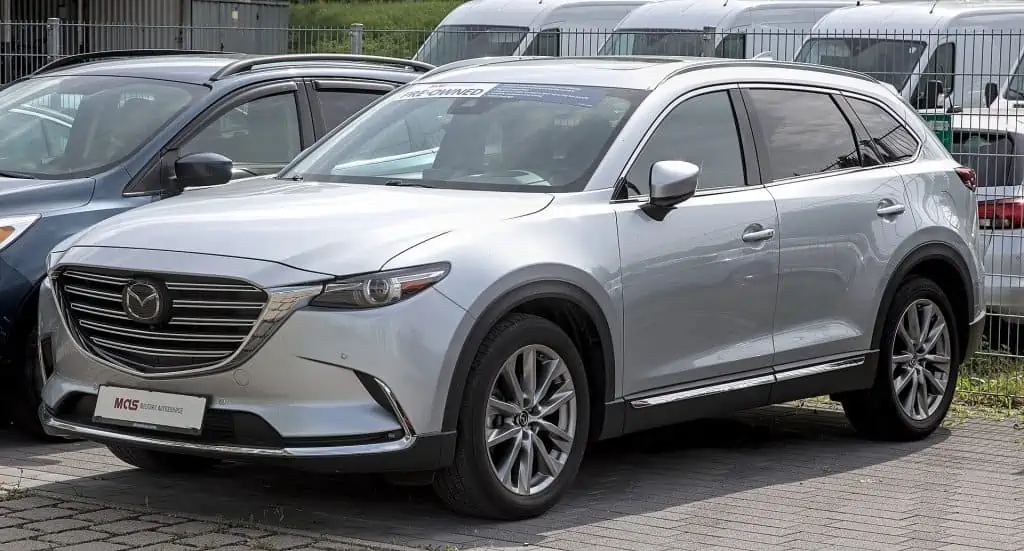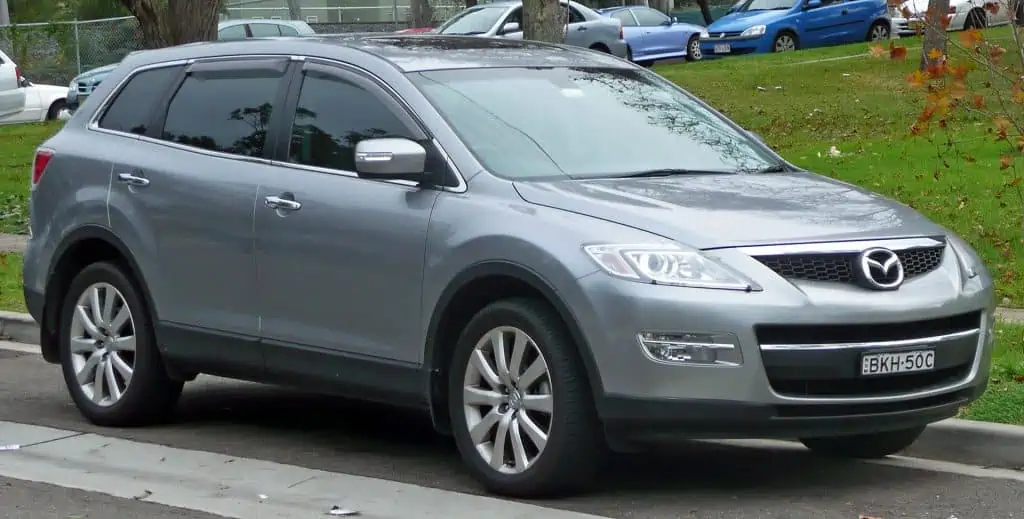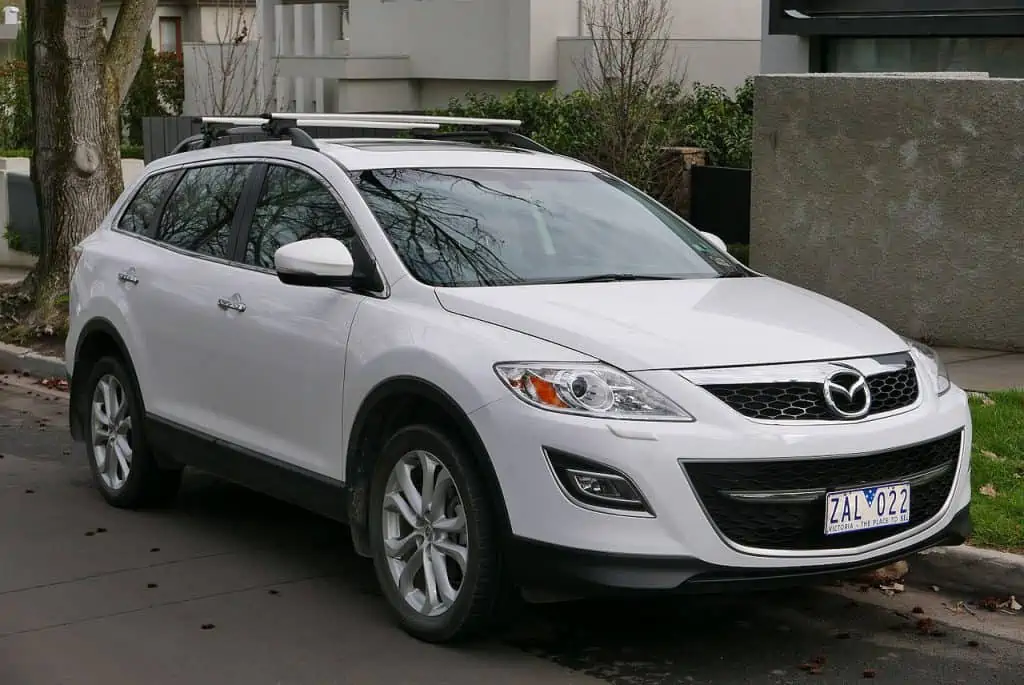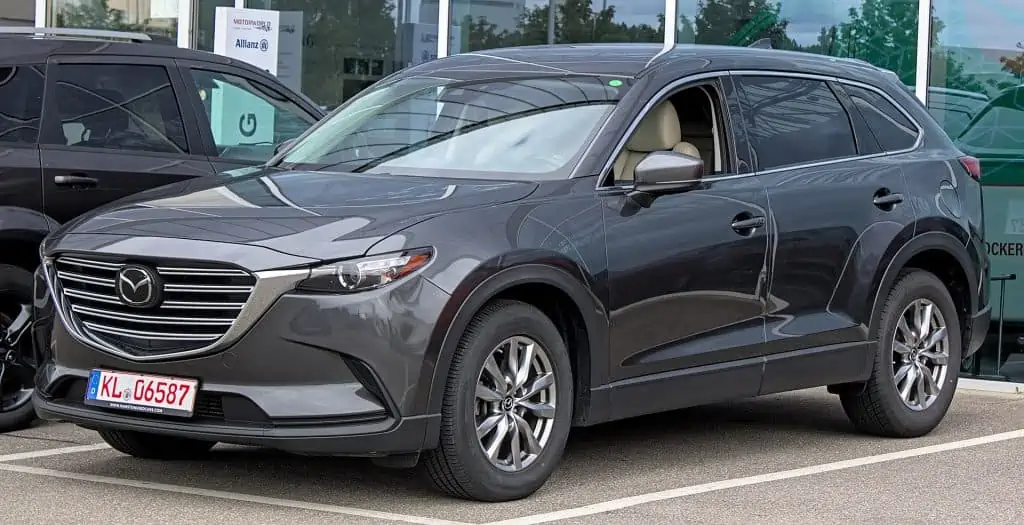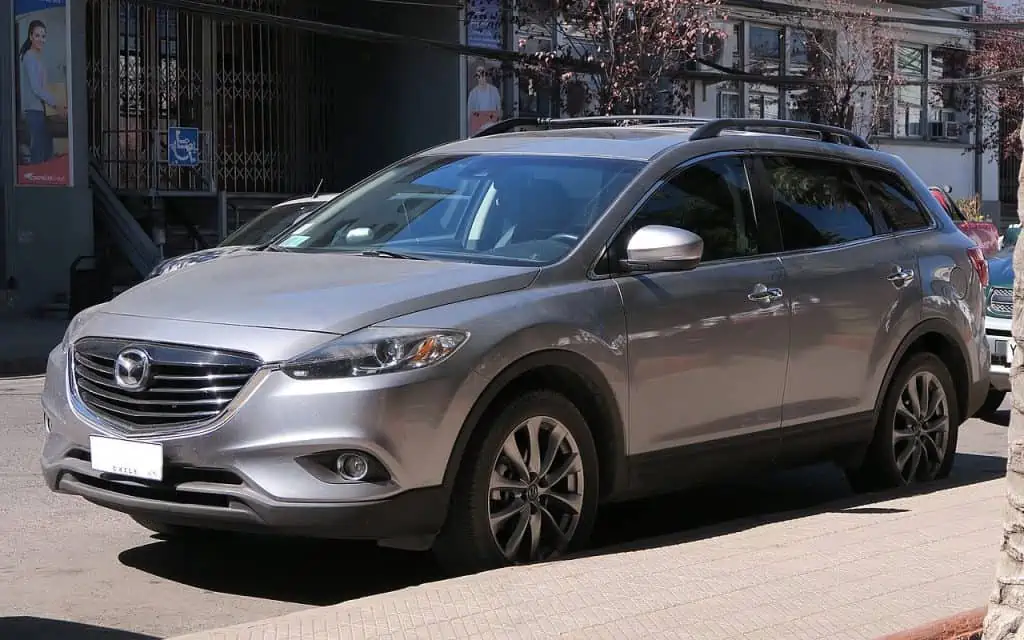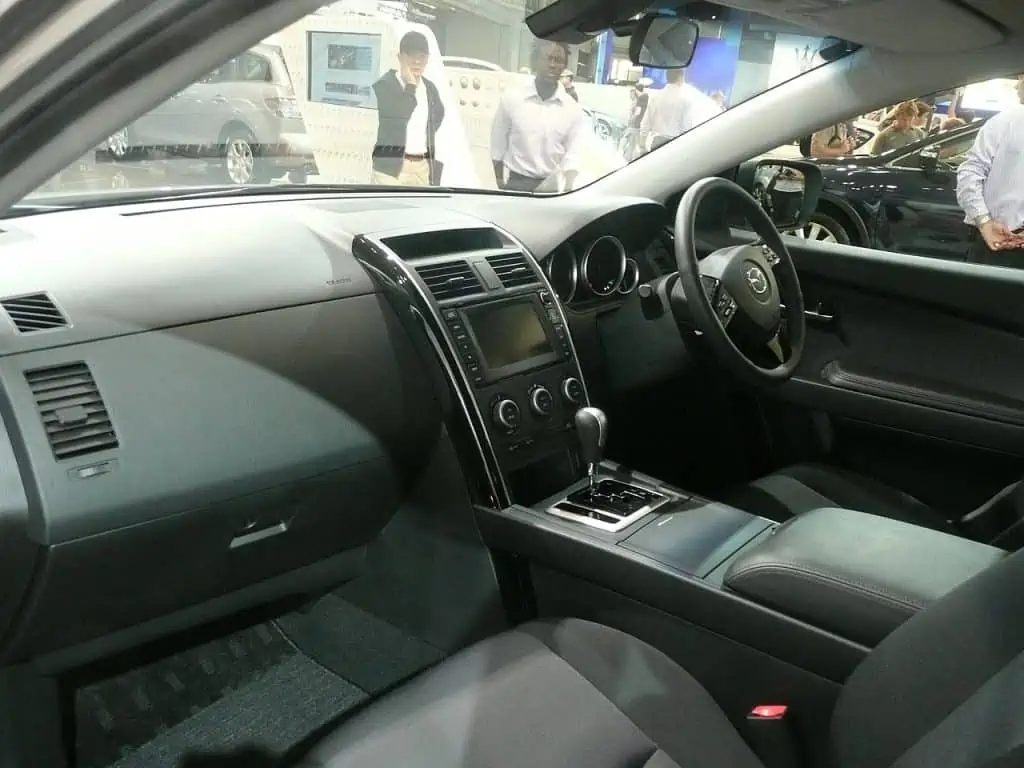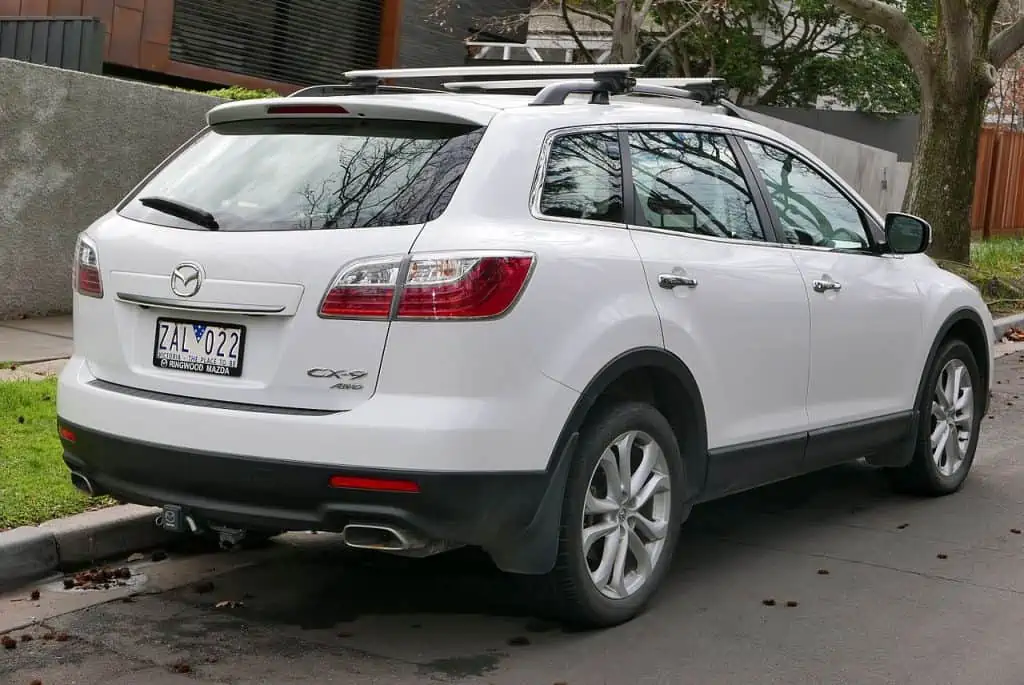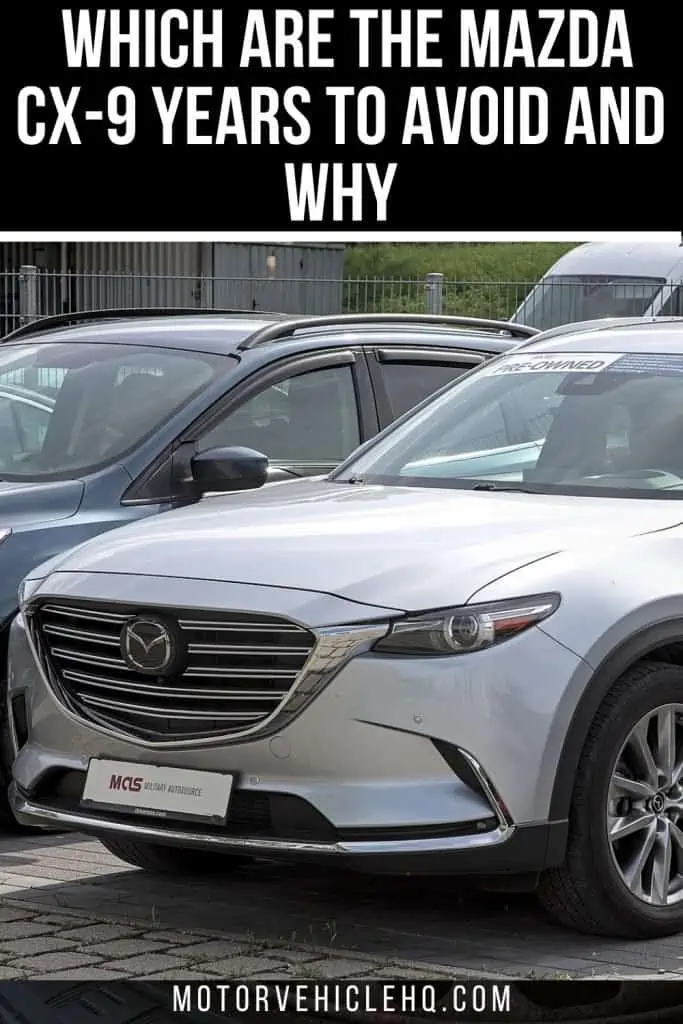Are you planning to buy a used Mazda CX-9 and searching for a Mazda CX 9 years to stay away from? If so, then you are at the correct spot since there will be a lot to discuss on this subject.
One of your main goals should be to investigate before you decide to spend money on a vehicle. especially at this time when vehicle prices are skyrocketing.
The days when buying a car was inexpensive and simple are long gone. Sadly, the greatest vehicles of the day sometimes come at a premium price.
Therefore, you must roll up your sleeves and begin researching more about the model you intend to buy before you make a purchase. There are currently hundreds of models available, and each of these models comes in many generations.
As a result, there are almost no limits to the potential issues. Find the ones that are least likely to have problems before you buy, then. In the long term, you will have hundreds or perhaps thousands this way. However, you shouldn’t worry since we’ll take care of you.
We shall first briefly discuss Mazda and discover more about this Japanese automaker. Then, we’ll go through the fundamentals of the Mazda CX-9 and comprehend its fundamental ideas. We will discuss both CX-9 generations later on.
We will discover more about its specifications, typical issues, dependability, the ideal year, and the Mazda CX 9 years to get away from. So, keep reading if you want to discover more.
Mazda Automakers: Who are They?
Now let’s take a look at Mazda in general and learn more about this automaker before we discuss the CX-9 model and the Mazda CX 9 years to avoid.
People who are unfamiliar with the brand will have a wonderful opportunity to become acquainted at this event. Let’s discuss Mazda’s history.
Mazda is a Japanese automaker, in case you didn’t know. They are one of Japan’s most established automakers. In Fuchu, Hiroshima, Japan, Jujiro Matsuda established the business.
The business was originally founded as a cork manufacturer. Mazda began manufacturing items with wheels in 1931. The Mazda-Go was the initial wheeled product.
Mazda CX-9 by Alexander Migl / CC BY-SA 4.0. The consequence of the successful partnership between Mazda and Ford is the mid-size SUV known as the Mazda CX-9. Its first version was released in 2006.
Rickshaws were called Mazda-Gos. The rickshaw, which is mostly utilized in Asia, is somewhat comparable to a motorbike.
During World War II, they made weapons, and the Mazda R360 was the first car to roll off the assembly line in 1960. The Mazda Carol was the next model, which was released in 1962, and many more followed.
Mazda’s rotary engine, though, is what makes it intriguing. In honor of its creator Felix Wankel, this engine is referred to as the Wankel engine.
Compared to the typical gas-powered piston engine we are familiar with today, this rotary engine operates differently. And this engine was used in various classic Mazda cars, including the more recent Mazda RX-7 and RX-8.
Mazda was also well-liked in the US. Particularly during the 1973 oil crisis, which prompted many individuals to downsize and purchase vehicles with smaller engines.
However, this success has diminished in recent years, and sadly, the majority of today’s youth are not very familiar with Mazda.
Mazda CX 9: What Type of Car Is It?
More information was revealed about Mazda and its illustrious history in the US market. Mazda continues to sell a sizable number of vehicles even though it is no longer a major player.
And the Mazda CX-9 is one of these vehicles. So, before we go further and learn more about the model’s specifications and the Mazda CX 9 years to avoid, let’s take a look at what this model is all about.
If you weren’t aware, the Mazda CX-9 is a mid-size SUV that was developed as a result of the productive collaboration between Mazda and Ford. Its initial iteration was introduced in 2006.
Despite Mazda’s best efforts, this model was never able to be produced for the Japanese market due to its size and preponderance of sales in the US. Nevertheless, the CX-8 was offered in Japan.
The CD3 platform, jointly developed by Ford and Mazda, is the foundation for this engine. Numerous Ford, Mercury, Lincoln, and Mazda cars all used this platform. Specifically, the Mazda6, Mazda CX-9, Mercury Milan, Ford Edge, and Ford Fusion.
This indicates that these cars have a common genetic makeup. Even though Ford uses Mazda’s designs and prefers to employ its engines.
So, we’ll see what kind of engines this model is employing eventually. You must comprehend that this model has two distinct generations for the time being.
While the second generation is a true Mazda vehicle, the first generation was a result of the Ford-Mazda alliance. However, we will talk more about that in a later section when we concentrate on the Mazda CX 9 years to avoid.
Which are the Mazda CX-9 Years to Avoid
The Mazda MPV minivan was replaced by the first Mazda CX-9, which was unveiled in 2007. It was a spacious, comfortable, and maneuverable CX-7. It also had a third row, bringing the total to seven-passenger seats.
Since the CX-9’s beginnings, a lot has changed. It has been updated and is now bigger and more opulent than its predecessor. The finest models to purchase and the Mazda CX-9 years to stay away from are discussed in detail in today’s column. This is based on data gathered from consumers of various model years.
2009 Mazda CX-9 by OSX. The model from 2009 received the fewest complaints. The three most common problems were windows that opened after being closed, melting light bulb harnesses at 95,000 miles, and leaky sunroofs after 25,000 miles of washing.
The Mazda CX-9 years to avoid are as follows:
- 2008
- 2010
- 2011
- 2012
Currently, the Mazda CX-9 is in its second generation. It has undergone modifications to become a dependable SUV today. We advise avoiding the 2008, 2010, 2011, and 2012 model years.
Since the vehicle was introduced to the market, they have accumulated the most issues. The brakes, engine, transmission, and water pump all have serious flaws.
The Mazda CX-9 from 2008 and 2012 is the most impacted vehicle. The latter receives the most general complaints while the former has more issues per mile that are more expensive to fix. These Mazda CX-9 years should be avoided if you’re seeking a dependable secondhand SUV.
The 2008 Mazda CX-9’s engine, brakes, wheels, suspension, airbags, and steering are among its most troublesome components. The worst issues encountered include:
- Failure of the water pump at 102,000 miles.
- The brake booster master cylinder broke down at 133,000 miles.
- Dirty and stained wheels at 31,000 miles.
For the 2010 model year, the brakes, engine, transmission, and suspension have received the most complaints. The greatest issues were a failing water pump at 104,000 miles, an engine failure at 100,000 miles, and difficult and harsh braking at 99,000 miles.
The 2011 Mazda CX-9 is soon followed by models with several airbag and braking issues. The brakes were the area where issues cost the most money. These include brakes that stopped working after 83,000 miles, a defective brake booster at 107,000 miles, and hissing brakes at 88,000 miles.
The majority of complaints pertain to the brakes, with the 2012 model year having the most overall. The remaining sections discuss the drivetrain, airbags, and engine. Users reported gearbox issues at 36,000 miles, heavy braking at 61,000 miles, and brake power boost failure at 67,000 miles as the worst scenarios.
Why are These Years Included In the Mazda CX-9 Years to Avoid List?
These years should be avoided for the Mazda CX-9 for the reasons listed below;
2008
The primary issue with the 2008 Mazda CX-9 is when the water pump malfunctions and starts leaking coolant in places like the engine and other undesignated areas. Even folks without a mechanical vocabulary understand that’s not good.
“No ZOOM ZOOM here,” one owner declared. The ‘internal’ water pump failed at 109K [miles], allowing coolant and water to combine with the oil and destroy the engine.
IMPOSSIBLE engineering creation! Vehicle water pumps fail frequently without harming the engines. It is disgusting to consider that Mazda would ever utilize a car with such a poor design, resulting in such an incident.
2012 Mazda CX-9 by OSX. Due to an electrical fault in the brake light switch, the brake lights on the 2012 Mazda CX-9 either won’t turn on or stay on constantly.
Owners said that the cost of fixing the issue was $3,990. This required completely replacing the engine.
A few owners succeeded in replacing the engine with second-hand components, which most likely resulted in some long-term financial savings. Around 102,150 miles, the water pump often starts to malfunction.
You may become trapped on the side of the road due to certain issues. Some people are so hazardous that they may end up starting a collision that claims the lives of others.
Many Mazda CX-9 customers stated that their brakes started to feel shaky but still functioned. At least for a bit. The owner was typically traveling down the interstate when the brakes abruptly failed.
The master cylinder brake booster replacement looks to be the sole solution. Due to a lack of available components, one owner said they were forced to wait months.
Mazda had to create a new computer that could create the required pieces. While waiting to get back in their Mazda CX-9, they racked up a $600 charge while driving about in rental vehicles.
The majority of owners had to pay to have their trucks hauled in, which increased their costs. Many owners have sworn never to purchase another Mazda again since it was such a terrifying experience. Surprisingly, the master cylinder brake booster issue was never the subject of a recall.
Not all issues pose a risk to life. Many are primarily aesthetic and may end up being more of a hassle than anything else. That is the situation with the wheels of the 2008 Mazda CX-9, which appear damaged and soiled.
Since Mazda failed to provide any owners who reported the issue with a fix, no information was provided on the cost of repairs. According to one owner, Mazda attributes the discolored wheels to poor car washing rather than an aluminum wheel fault. refuses to give them a guarantee.
The Mazda CX-9 had just been released, therefore the issue was still very fresh. Around 32,000 kilometers, the wheels started to seem discolored. Owners who only receive a warranty for the first 30,000 miles were left on their own.
Even though they could always get new wheels, some of the owners find it annoying that they should have to. Additionally annoying was Mazda’s denial of any wrongdoing.
Although improper car washing may have contributed to the issue, it is difficult to believe that many owners of the same model had the same issue. In either case, Mazda most likely lost some clients due to the 2008 CX-9.
2010
On variants with the six-speed automatic gearbox, the Mazda CX-9 is well known for having problems with harsh shifts and transmission slippage.
The problem is most obvious as a reluctance to shift followed by jerking or jolting into the next gear when the gearbox is warm. The check engine light is not frequently seen in conjunction with these problems.
Software flaws, which do not take into consideration all factors when the transmission warms to normal operating conditions, frequently cause the gearbox to slide and cause hard shifting.
In rare circumstances, the automatic transmission may be experiencing problems with its shift solenoids or valve bodies.
Mazda CX-9 by Alexander Migl / CC BY-SA 4.0. There have been several changes since the Mazda CX-9 first appeared. It has been refurbished, growing in size and opulence above its forerunner.
Many of the reported concerns have been resolved, but not all, thanks to software upgrades from the transmission’s manufacturer.
The transmission may require valve body replacement, shift solenoid testing and replacement, or potentially a complete rebuild in circumstances where software upgrades to the transmission controller have failed.
Although the fluid is not often thought to be a probable cause because the transmission is permanently sealed, many experts advise replacing the transmission-specific automatic transmission fluid at regular intervals.
The body control module may experience several electrical difficulties (BCM). There have been complaints of blocked or broken sunroof drains causing water damage to the BCM. The sunroof drain should be checked for obstructions regularly and cleaned as necessary.
When driving over bumps at moderate speeds, you could hear a chirping or squeaking sound coming from the front of the car. The front strut mounts, which will need to be replaced, are typically to blame for this kind of noise.
2011
The airbag system has been the subject of several complaints from 2011 Mazda CX-9 buyers. Even though the TAKATA recalls’ most frequent problem is the lack of replacement components, some complainants have reported that curtain airbags have accidentally deployed.
There is currently no known explanation for the problem, but the firm has launched an inquiry to look into it.
A common issue is the water pump failure on the Mazda CX-9. Numerous consumers have noticed their midsize SUVs abruptly halting and losing power across the current edition.
In the majority of cases when a diagnosis has been made, a malfunctioning water pump that results in overheating has been identified as the root cause.
The possible remedy is to replace the pump; but, if this is not done, the engine may completely seize up.
Customers of the SUV have also mentioned severe body trembling on the list of 2011 Mazda CX-9 issues.
This occurs as a result of a malfunctioning transfer case that lets oil out and might cause the engine to stall over time. It has occasionally also led to issues with the gearbox system, which has reduced ride quality.
Customers of the SUV have also mentioned that the braking system on the Mazda CX-9 frequently fails to bring the SUV to a complete stop. The failure of the brake booster causes the brake pedal to become spongy, which is accompanied by a hissing sound when used.
These problems account for more than 50% of the reported complaints, yet as of right now, neither a service bulletin nor a recall is available to address the problem.
There have been reports of water leaks corroding the front suspension ball joints. This may cause the driver to lose control of the car while it is moving, thus Mazda has issued a recall identified by NHTSA ID 15V451000 to address the problem.
2012
An extremely serious and worrying issue with the 2012 Mazda CX-9 has been a complete engine failure caused by an internal water pump failure.
As stated, there are no prior warnings regarding this issue, and the majority of cases were only discovered when the engine stalled (often in conjunction with an engine malfunction/overheating warning) as a result of the leaky coolant completely clogging the engine’s internals.
Mazda CX-9 2013 by RL GNZLZ / CC BY-SA 2.0. The 2013 Mazda CX-9’s parts that draw the most criticism are the engine, brakes, and airbags.
Typically, vehicles with mileage in the vicinity of 100,000 miles have this failure, and a replacement engine is anticipated to cost roughly $6,000.
Since the timing chain drives the water pump on this Ford-sourced V6 motor, inspection or preventative maintenance is very time-consuming and prohibitively expensive, leading to some owners neglecting it even though the failure is essentially unavoidable.
It is well known that the 2012 Mazda CX-9 exhibits transfer case issues or full failure at low miles.
Because of the transfer case’s proximity to the catalytic converter, the lubricating oil degrades rather fast, which frequently causes the gears to overheat and seize during extended rides.
The rapid loss of drive or an excessive amount of drive line grinding is two signs that a transfer case has failed.
On the 2012 Mazda CX-9, brake booster failure is a common problem, and more than 60% of the NHTSA complaints filed against this model year are in the service brake area.
Spongy brake pedals, hissing noises coming from the brake pedal region, or an abrupt lack of braking aid are signs of a deteriorating or failed brake booster.
Surprisingly, considering the seriousness of the issues, authorities mandated to look into this matter have permitted Mazda to implement a Special Extended warranty scheme instead of an emergency recall.
The 2012 Mazda CX-9’s brake lights won’t turn on or remain on all the time due to an electrical short in the brake light switch. According to reports, when the brakes are used, this also activates the ABS/TCS warning and prevents the user from using the cruise control features.
A short or open circuit in the brake light switch assembly was indicated by the error code C1446, which was noted.
The maker of the 2012 Mazda CX-9 has acknowledged that excessive corrosion can cause the front suspension ball joint to fail. The concerned item should be examined and replaced under the recall 15V451000 for vehicles that are often utilized close to coastlines.
Some signs of a worn-out ball joint are excessive steering vibration and front-end noise. Users have expressed worry about the components’ inaccessibility, which can occasionally last for months due to backorder.
The Takata recall for a defective airbag module that may explode as a result of manufacturing flaws includes the 2012 Mazda CX-9. To lower the increased risk of personal injury, it is strongly urged that customers have the restraint system examined and the affected modules replaced under the recalls listed in the table.
Which Years of the Mazda CX-9 are Safe to Buy?
The Mazda CX-9 has always been a dependable SUV throughout the years, despite the model years that fall short. Except for those who were already named, of course.
You have a variety of year models to pick from. It wouldn’t make sense for Mazda to keep producing a subpar vehicle. If you’re seeking a trustworthy SUV, we advise purchasing one of the Mazda CX-9 model years listed below:
- 2007
- 2009
- 2013
- 2014
- 2015
- 2016
- 2017
- 2018
- 2019
- 2020
2008 Mazda CX-9 interior by OSX. The 2008 Mazda CX-9’s main problem is a malfunctioning water pump that causes coolant to leak into locations other than the engine and other undesignated areas.
2007–2009, 2013–2014, 2015–2016, 2017, 2018, and 2019–2020 are the best years to purchase a Mazda CX-9. Compared to the 2008, 2010, 2011, and 2012 model years, they have fewer complaints.
Only a few concerns have been made about the airbags, drivetrain, suspension, and transmission in the 2007 CX-9. The worst issues in this situation are:
- Failure of the rear differential at 79,000 miles.
- Bearing wearing out prematurely at 28,000 miles.
- A leaky and noisy transfer case at 99,000 miles.
Among the prior editions, the 2009 model had the fewest complaints. The biggest issues reported were a melted light bulb harness at 95,000 miles, windows that open after being closed, and a leaky sunroof when you wash your car after 25,000 miles. Several airbag and brake-related complaints were made by owners.
The engine, brakes, and airbags are the 2013 Mazda CX-9 components that receive the most criticism. The worst issues that some owners have included:
- Failure of the water pump at 99,000 miles.
- Failure of the engine at 86,000 miles.
- A malfunctioning brake pump pedal at 64,000 miles.
The three most common issues for the 2014 model year were alternator failure, brake issues, and engine issues. In comparison to the 2015 CX-9, braking issues were more frequent. The last model year to have widespread owner complaints was the 2016 model year.
The years 2017, 2018, 2019, and 2020 are mostly problem-free. The Insurance Institute for Highway Safety gave several of these cars its Top Safety Pick Plus Award (IIHS).
Which are the Common Problems With the Mazda CX-9?
In 2006, Mazda launched the CX-9 to their lineup. As a result, they spent a lot of time fixing the issues with this model.
Fresh issues might still arise, but they are less likely to do so than with a new design. The CX-9 is a capable crossover, although owners have noted a few issues with it.
1. Engine Problems
Premature engine or transmission failure is the most expensive type of failure a car may have. However, the Mazda CX-9’s engines didn’t fail in every model year.
Fewer than 50 vehicles per year, produced in 2008, 2009, 2010, 2011, and 2012, had engines fail at about 100,000 miles.
For the owner of a car that should easily reach 100,000 kilometers and many more, this is an early loss. However, if you include in the replacement cost of about $5000, purchasing a new vehicle would be preferable to having your current vehicle repaired.
2. Power Brake Booster Malfunction
Moving ahead is critical, but stopping your vehicle is just as, if not more, crucial. Unfortunately, the CX-9 experienced issues with a failing brake power boost unit for several model years.
Many owners’ CX-9s had these events happen around the 65,000-mile mark. The power boost unit and braking systems need to be replaced as a cure.
The cost to replace a power brake booster can range from $500 to $1000. Whether you perform the work yourself or hire a dealership will affect the price.
This problem has frequently happened after the car’s warranty has expired.
2012 Mazda CX-9 rear by OSX. The front suspension ball joint failure caused by severe corrosion has been acknowledged by the 2012 Mazda CX-9’s manufacturer.
As a result, whether you’ve had your CX-9 since new or you recently acquired it, will determine how much it will cost to fix it.
It is recommended to get the braking system tested before signing the contract and receiving a receipt for your used CX-9. That is unless you are capable of doing a $1,000 fix.
The Mazda CX-9 has received the most complaints overall concerning brake problems.
3. Difficult Transmission Shifts
Some CX-9s have experienced transmission slippage issues. These events have happened on six-speed automatic CX-9s.
On some models, the issue was caused by software problems, which have been fixed by upgrades. Hard shifting, though, might result from other issues.
Your CX-9 needs to be serviced if it displays this propensity.
For your Mazda to operate at its best, the cause of any hard shifting, whether it is software-related or not, has to be identified and resolved.
4. Transmission Often Slipping
A transmission that slides is an indication that something isn’t quite right, just like the one that shifts forcefully. The gearbox of a car is intricate, and slippage, like difficult shifting, may be brought on by software.
A technician can diagnose your transmission’s issue. There have been complaints of hard shifting and severe transmission slippage in CX-9 vehicles from 2007 through 2016 and 2018.
The replacement of faulty solenoids is one of the fixes that have been undertaken.
To fix the issue, it has also been required to upgrade the transmission controller and, in certain cases, replace the transmission.
Transmission failure typically happens when the Mazda CX-9 is no longer covered by a warranty, much like other issues. A full gearbox replacement is pricey, much like replacing an engine. It may also imply that while waiting for components, your vehicle would be out of operation for days to weeks.
5. Squeaking Sounds from the Front End
Owners of CX-9 models produced between 2007 and 2010 have complained about squeaking sounds emanating from the front of the vehicle. Belts, bearings, springs, and worn bushings can all cause squeaking.
While some squeaks are innocuous, others are warning signs that your car’s front end needs to be fixed. For instance, worn front and rear struts may creak and bang, signaling that they should be replaced.
Any strange noises coming from the front of your vehicle must be examined by a professional. It may be nothing, but it also might be something that, if not repaired, might fail, in which case it wouldn’t be worth the risk.
6. Total Failure of the Water Pump
The water pump, another component of a crucial system, maintains water flow throughout your cooling system. Your vehicle might soon overheat if the water pump fails.
Maintaining a top-notch cooling system is crucial because an overheated engine might distort to the point where it is destroyed. When the CX-9 engine’s water pump malfunctions, water from the cooling system may enter the oil system and damage it.
It is very impossible to predict when a water pump may malfunction. However, maintaining your crossover cooling system and monitoring the temperature of your radiator can alert you to potential problems.
7. Water Damage to the Body Control Module
Every computer in a car is in communication with the body control module (BCM). It turns on relays that control the air conditioning, mirrors, power windows, door locks, and other electrical parts of the car.
The gadgets in your vehicle won’t be able to communicate effectively without a suitable BCM.
In CX-9s, blocked sunroof drains can cause the BCM to become wet and malfunction. It will need to be replaced if this occurs.
The Conclusion
The Mazda CX-9 model was addressed in this article. First, we gained an understanding of the CX-9 and its fundamental ideas.
After that, we covered the CX-9 iterations. We gained knowledge about their specifications, typical issues, dependability, finest years, and the Mazda CX 9 years to stay away from. We also decided as to which models function well and which do not.
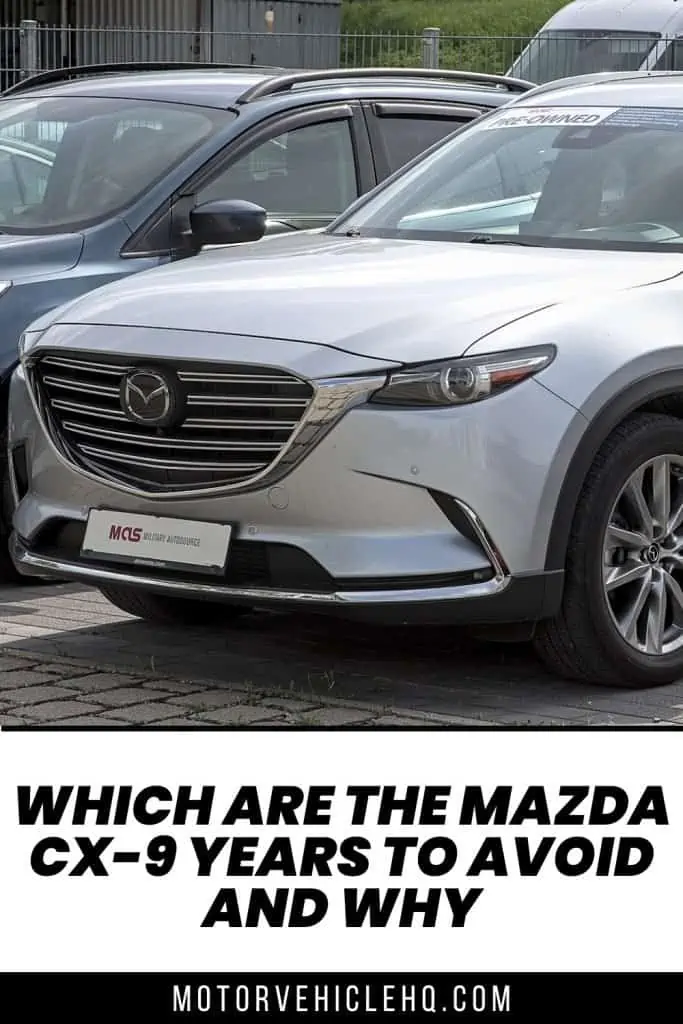
Mazda CX-9 by Alexander Migl / CC BY-SA 4.0

Jim Wicks is the founder of MotorVehicleHQ. With over two decades of experience in the automotive industry and a degree in Automotive Technology, Jim is a certified car expert who has worked in various roles ranging from a mechanic, car dealership manager, to a racing car driver. He has owned more than 20 cars over the past 15 years. Ask him about any vehicle you see on the road and he can tell you the make, model and year. He loves the aesthetics of all things cars, and keeps his vehicles in pristine condition.
In his free time, Jim enjoys getting his hands dirty under the hood of a classic car or taking long drives along the country roads. His favorite car? A 1967 Shelby GT500, a true classic that, according to Jim, “represents the pure essence of American muscle.”
